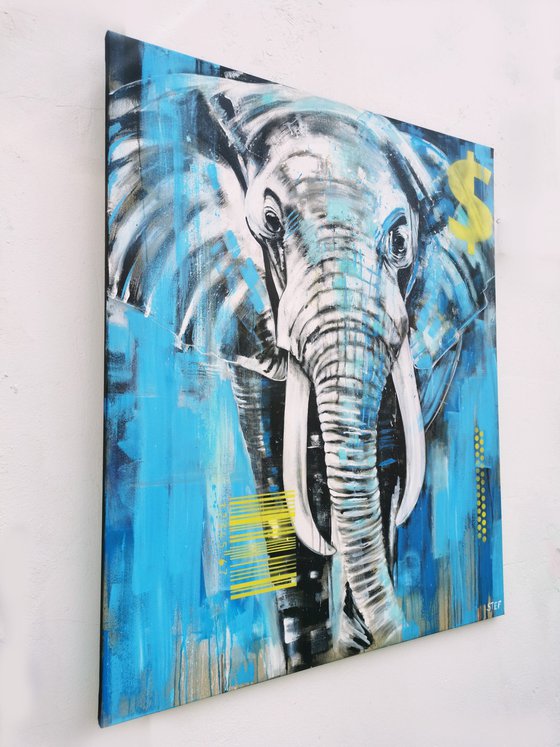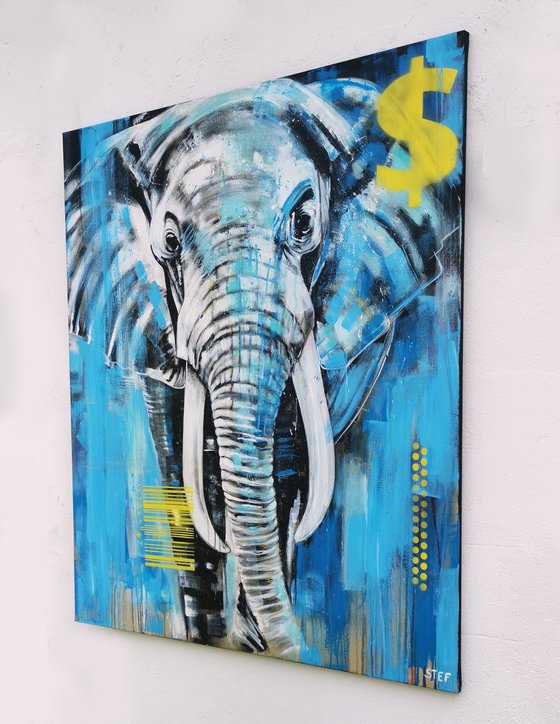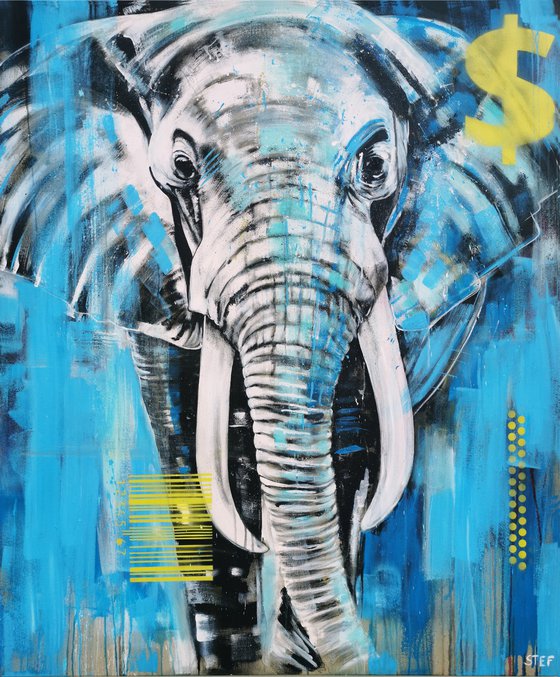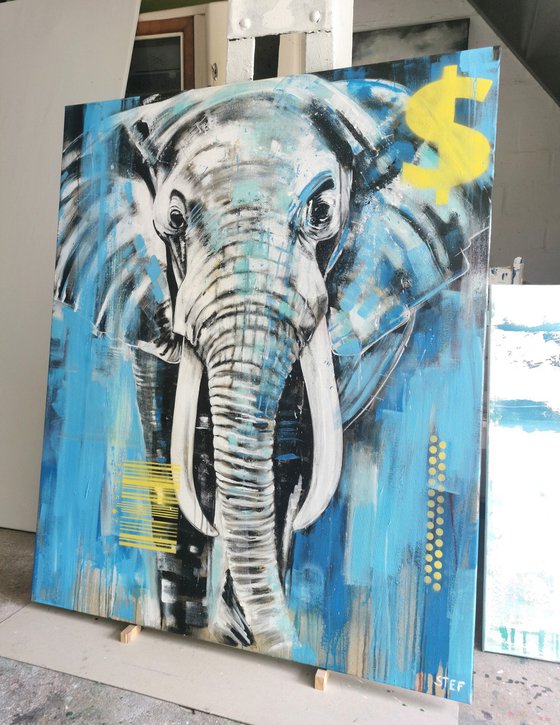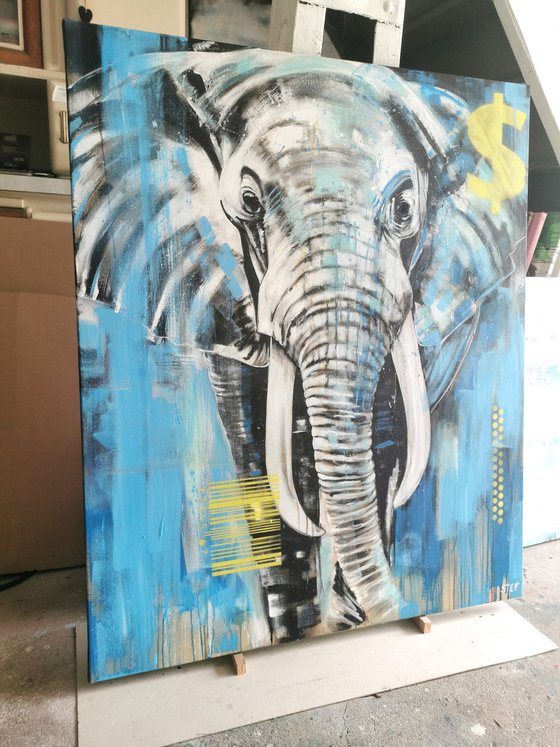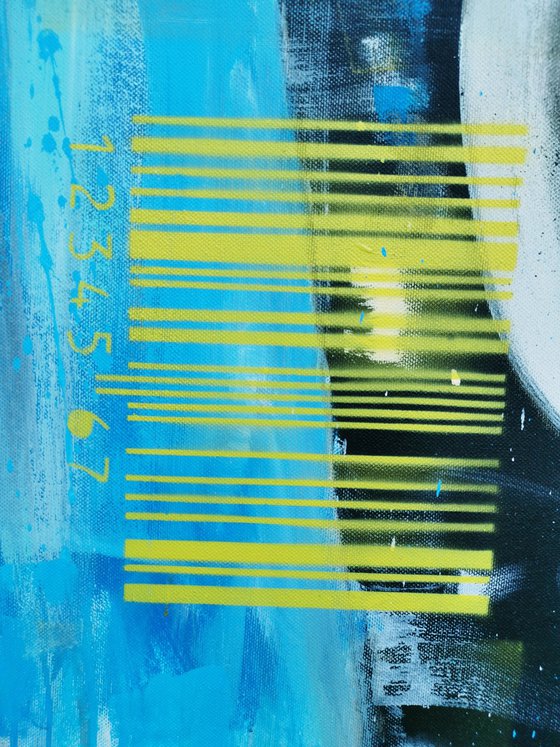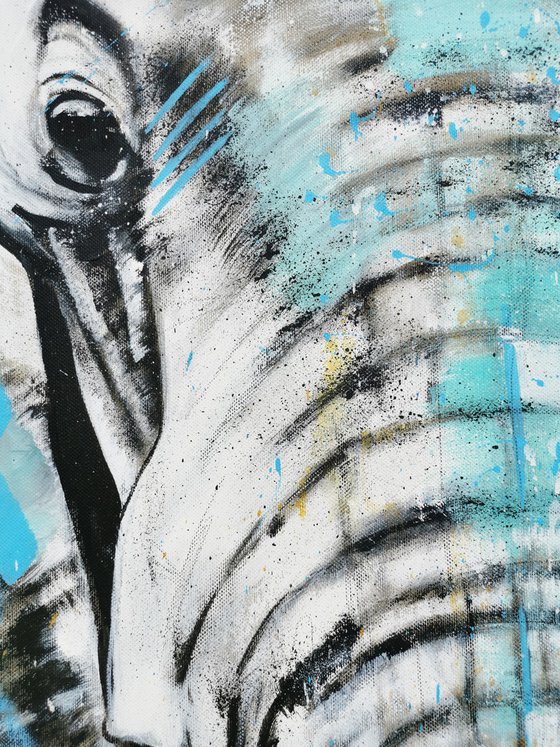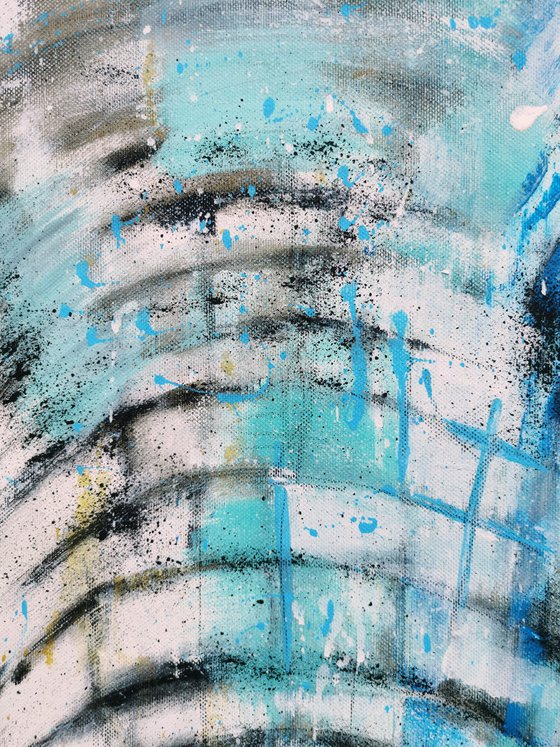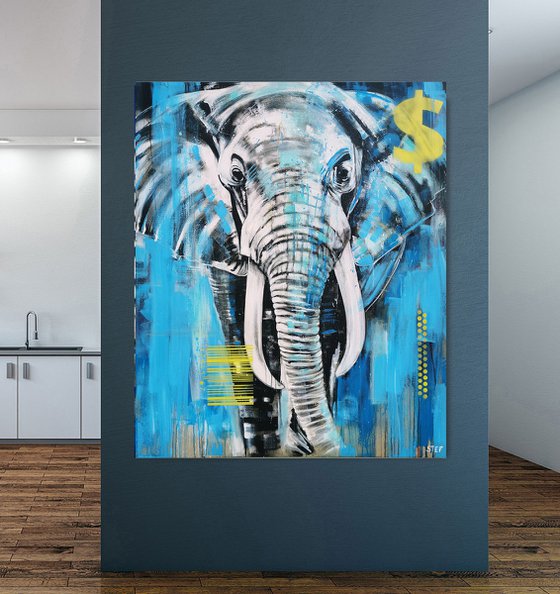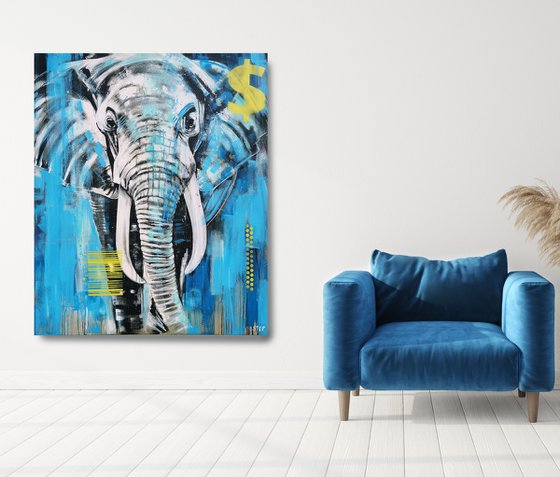- By medium
- By subject
- By budget
- Sales
- Gift cards
- Discover all art
- Artists
- Editors’ picks
- Ideas
Original artwork description:
A large painting on canvas ELEPHANT no27
Original art of an elephant 100 x 120 cm.
This work was created in the series "On the Red List".
A critical work intended to draw attention to the endangerment of elephants.
The picture is painted on canvas with high-quality artists' acrylic paints and stretched on a stretcher frame.
The painting can be hung directly.
Material: acrylic, graphite and glossy varnish against weather influences.
I send the picture well packed in bubble wrap and in a secure box via DHL.
Please note:
Room view is for illustrative purposes only and is not exactly to scale.
Colors may vary depending on screen settings.
My thoughts behind this work:
The threatened existence of elephants: climate crisis, poaching and the dark side of capitalism
Elephants face an existential threat. In addition to dangers such as the climate crisis and poaching, the dark shadow of capitalism also threatens their existence. This combination of factors has resulted in elephants being placed on the Red List of Threatened Species, requiring urgent action to ensure their survival.
The climate crisis poses a direct threat to elephants and their habitats. Rising global temperatures are leading to increasing droughts and water shortages in the regions where elephants live. These changes affect their food sources and their ability to survive. Elephants rely on large amounts of plant matter to meet their energy needs. However, when their natural food sources become scarce due to drought, they suffer from malnutrition and are more susceptible to disease.
Poaching is another devastating threat to elephants. Demand for ivory products, particularly in some parts of Asia, is driving poachers to forcibly kill elephants and capture their tusks. This has led to a dramatic decline in elephant populations and unbalanced the ecosystems in which they live. Poaching not only has a direct impact on the elephant population, but also on biodiversity and ecological balance, as elephants act as “garden architects” and shape vegetation.
The ivory trade is driven by unscrupulous actors who put greed for profit over conservation. The demand for exotic luxury products and status symbols fuels the ivory trade and further fuels poaching. This overexploitation not only endangers elephants, but also undermines efforts to protect and conserve biodiversity.
Urgent measures must be taken to ensure the survival of the elephants. Internationally, increased efforts are needed to address the climate crisis and protect elephant habitats. Governments, environmental organizations and civil society must work together to combat poaching by increasing law enforcement and raising awareness of the impact of the ivory trade.
Materials used:
Acrylic, graphite, varnish
Tags:
#african american #elephant #african animal #wildlife painting #wildlife art #elephant painting #elephant art #red listedFeatured by our Editors:
ELEPHANT #27 - RED LIST (2023) Acrylic painting
by Stefanie Rogge
12 Artist Reviews
£1,627.24
- Acrylic painting on Canvas
- One of a kind artwork
- Size: 100 x 120 x 2cm (unframed)
- Ready to hang
- Signed on the front
- Style: Expressive and gestural
- Subject: Animals and birds
Loading
Original artwork description
A large painting on canvas ELEPHANT no27
Original art of an elephant 100 x 120 cm.
This work was created in the series "On the Red List".
A critical work intended to draw attention to the endangerment of elephants.
The picture is painted on canvas with high-quality artists' acrylic paints and stretched on a stretcher frame.
The painting can be hung directly.
Material: acrylic, graphite and glossy varnish against weather influences.
I send the picture well packed in bubble wrap and in a secure box via DHL.
Please note:
Room view is for illustrative purposes only and is not exactly to scale.
Colors may vary depending on screen settings.
My thoughts behind this work:
The threatened existence of elephants: climate crisis, poaching and the dark side of capitalism
Elephants face an existential threat. In addition to dangers such as the climate crisis and poaching, the dark shadow of capitalism also threatens their existence. This combination of factors has resulted in elephants being placed on the Red List of Threatened Species, requiring urgent action to ensure their survival.
The climate crisis poses a direct threat to elephants and their habitats. Rising global temperatures are leading to increasing droughts and water shortages in the regions where elephants live. These changes affect their food sources and their ability to survive. Elephants rely on large amounts of plant matter to meet their energy needs. However, when their natural food sources become scarce due to drought, they suffer from malnutrition and are more susceptible to disease.
Poaching is another devastating threat to elephants. Demand for ivory products, particularly in some parts of Asia, is driving poachers to forcibly kill elephants and capture their tusks. This has led to a dramatic decline in elephant populations and unbalanced the ecosystems in which they live. Poaching not only has a direct impact on the elephant population, but also on biodiversity and ecological balance, as elephants act as “garden architects” and shape vegetation.
The ivory trade is driven by unscrupulous actors who put greed for profit over conservation. The demand for exotic luxury products and status symbols fuels the ivory trade and further fuels poaching. This overexploitation not only endangers elephants, but also undermines efforts to protect and conserve biodiversity.
Urgent measures must be taken to ensure the survival of the elephants. Internationally, increased efforts are needed to address the climate crisis and protect elephant habitats. Governments, environmental organizations and civil society must work together to combat poaching by increasing law enforcement and raising awareness of the impact of the ivory trade.
Materials used:
Acrylic, graphite, varnish
Tags:
#african american #elephant #african animal #wildlife painting #wildlife art #elephant painting #elephant art #red listedFeatured by our Editors:
14 day money back guaranteeLearn more
